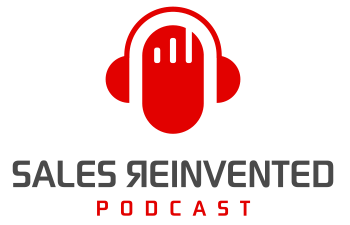Episode 312: Amy Franko

Meet
Amy Franko
Amy Franko is the leading sales strategist for growth-oriented mid-market organizations. She works with a variety of sectors to grow sales results, through both sales strategy and skill development programs. Her book, The Modern Seller, is an Amazon best seller and she is also recognized by LinkedIn as a Top Sales Voice.
Our Mission Is To Change The Negative Perception Of Sales People
Our Vision Is A World Where Selling Is A Profession To Be Proud Of
Storytelling is the first thing you can use to bring a situation to life and help someone connect with your product or service. Stories also give you credibility. That’s why stories should consist of genuine and relevant examples that help you better connect with your client. Even someone naturally skilled as a storyteller would benefit from learning skills to stay relevant. If it doesn’t come naturally to you, it’s a skill you can build and find success with. Amy Franko shares more of her thoughts on the topic in this episode of Sales Reinvented!
Outline of This Episode
- [0:55] Why storytelling is incredibly important
- [1:55] Can you learn how to tell stories well?
- [2:45] The 3 ingredients of a story that sells
- [3:59] Attributes of a great storyteller
- [5:18] Resources to improve your storytelling
- [6:13] Top 3 storytelling dos and don’ts
- [10:09] Involve your clients in your stories
Relevant Examples are key to stories that sell
Amy notes that relevant examples are a key ingredient to great storytelling. So is brevity and credibility. If a client is able to visualize the relevant example you’re sharing with them, it helps them connect to you as a credible source. Secondly, it helps them to connect and visualize—in their own environment—what you’re trying to convey. Do your examples in your stories help your clients challenge their thinking? Do your stories help them see things in a new light?
What are the attributes of a great storyteller? Listen to hear Amy’s thoughts!
Amy’s 3 storytelling dos and don’ts
What can you do to improve your storytelling? Amy’s dos and don’ts are spot-on:
- Keep a list of your stories and examples. You experience so many things in your personal and professional life that it’s impossible to catalog all of them in your head. So keep a running list in a notebook or a word document that you can pull from when you’re searching for a relevant example.
- Ask 2–3 of your best clients if they’re willing to share the story of your work together. Anytime Amy works with a prospective client, she asks for 2–3 people they can talk to that would be willing to have a conversation.
- Use data to augment your examples where it makes sense. Don’t lean heavily on data and metrics. The best storytellers can use that data to support a story. It can tell you how you need to change. The more comfortable you are with data, the more useful it becomes.
- Don’t forget to make your story relevant to the client. You’re better off with no example or story than using one that isn’t relevant to the situation.
- Don’t forget what you’ve learned—your own stories and experiences—are valuable to your client’s scenario. Everything that you’ve learned along the way makes who you are. Use it as part of your storytelling process.
- Don’t forget that brevity is key. If you’re listening to someone tell a story and you lose track or forget what the purpose is, it’s too long.
Involve your clients in your stories by sharing relevant examples
Amy had successfully made it to the final round in the running for a big opportunity with a client. She knew that she had to stand out from the other two competitors, which can be challenging when someone is seeing multiple presentations. What was her competitive advantage? Stories.
Amy got to meet virtually with a number of the stakeholders who were going to be part of the decision making process for this RFP. In that process, Amy learned about them, what was important to them in the project, and what each person’s decision-making process looked like.
Then she weaved that information into her presentation. She had built rapport through initial conversations and shown that she had listened to them by using relevant examples in her presentation. It helped her overcome the challenge and she ultimately won the RFP.
Involve your clients in the story where you can. It helps them feel connected. What can you learn and takwary from what they share with you that can be woven into a story? Lastly, Amy emphasizes that you must use stories to connect. People remember stories long after facts, figures, and data.
-
Resources & People Mentioned
- Amy’s book: The Modern Seller
Connect with Amy Franko
Connect With Paul Watts
Audio Production and Show notes by
PODCAST FAST TRACK
https://www.podcastfasttrack.com
Learn More About Amy Franko
Are there any books on or including Storytelling that you recommend? One of the first books I picked up on storytelling is Nancy Duarte’s Slide:ology.
In the field of Business Story Telling – Who do you most admire and why? I’m a fan of Dan Pink. His books expertly break down big topics, by combing through years of research and mining the stories from that research to help us learn.
Are there any aspects of your own Story Telling skills that you are working on improving at the moment? I shared this in the podcast, one of my productivity hacks is keeping a digital file of stories and examples. It’s a practice I want to continue.
Hobbies, Interests? I love international travel, all things fitness, and the outdoors. My husband and I live on water and so we love to put the kayaks and paddleboards in whenever we can.
How can our listeners contact with you? https://linkedin.com/in/amyfranko or https://amyfranko.com/contact/
Share This Episode, Choose Your Platform!
